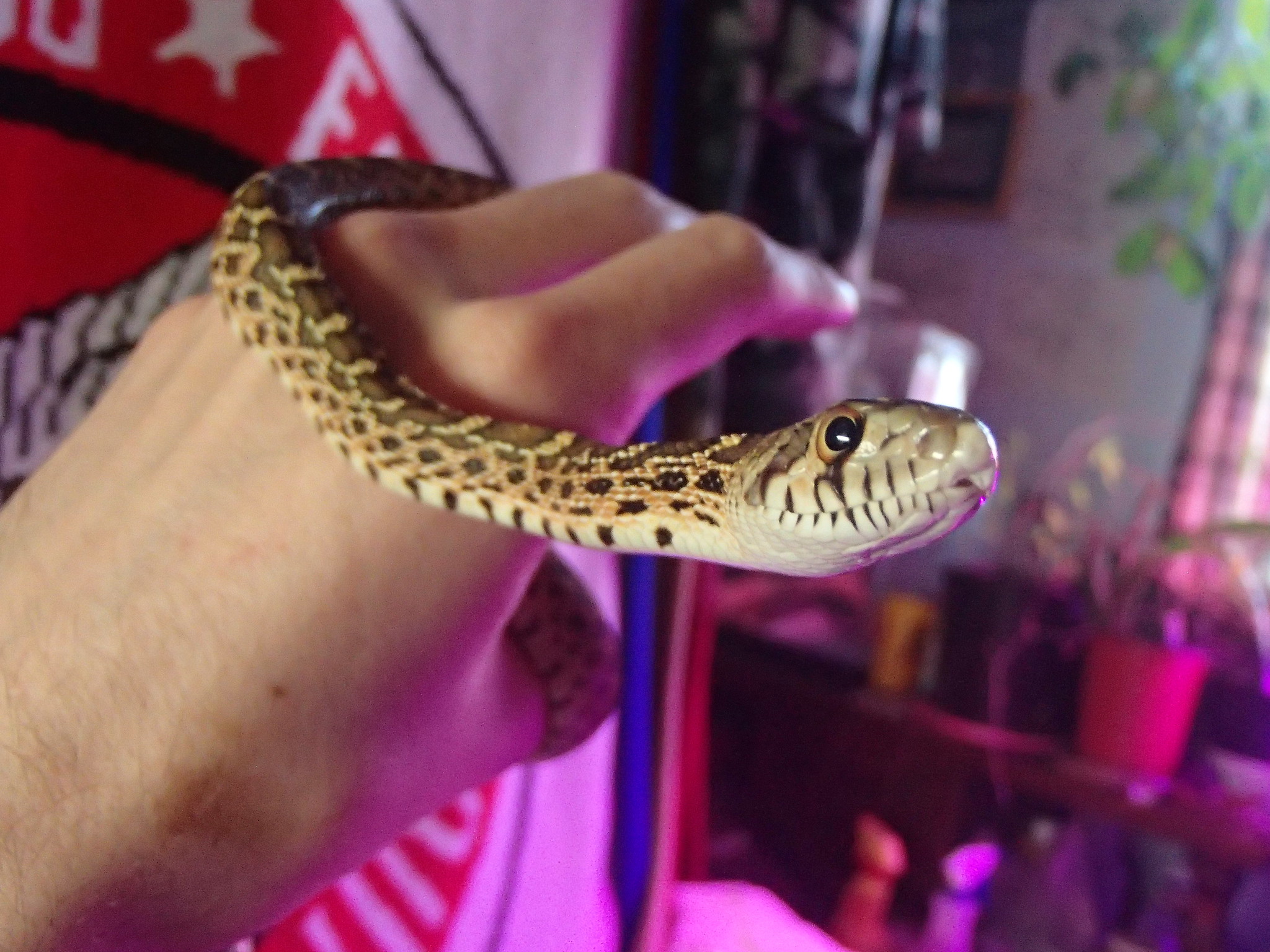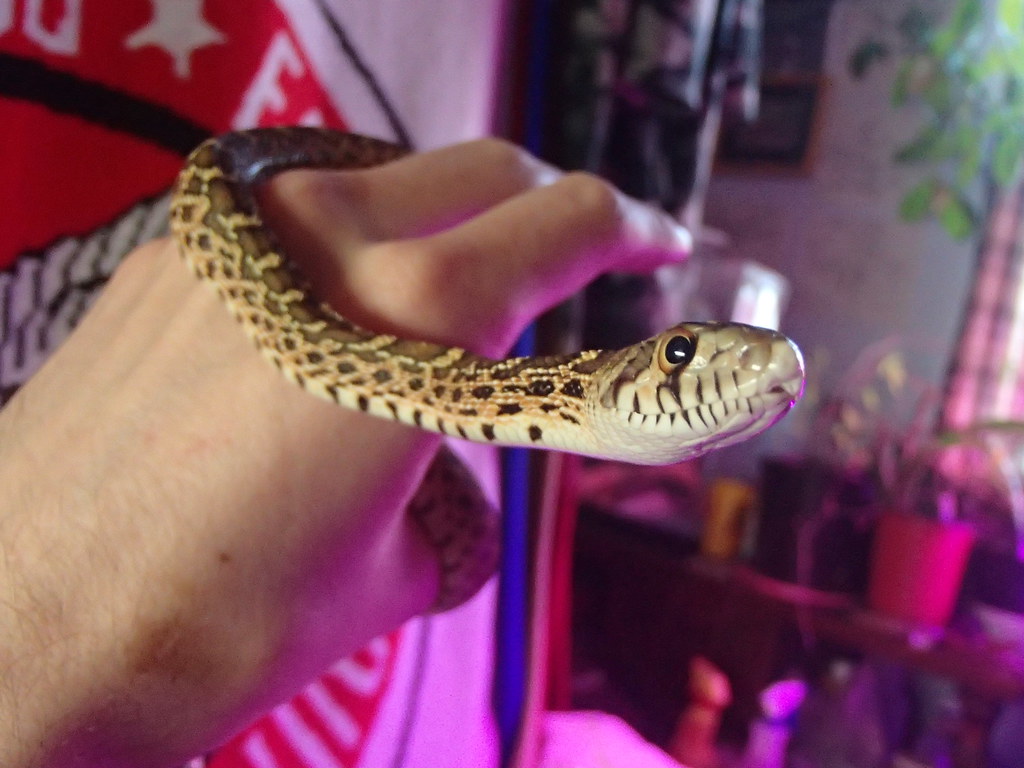You are using an out of date browser. It may not display this or other websites correctly.
You should upgrade or use an alternative browser.
You should upgrade or use an alternative browser.
A special new arrival
- Thread starter hcarlton
- Start date

Help Support Mantidforum:
This site may earn a commission from merchant affiliate
links, including eBay, Amazon, and others.
Mantis Lady
Well-known member
MantisGirl13
Well-known member
I love their patterns! So pretty!I
- MantisGirl13
- MantisGirl13
Teamonger
Well-known member
These are some adorable and beautiful noodles. You should be a proud parent 
That cheeky looking grin on Irwin is just the best.
That cheeky looking grin on Irwin is just the best.
The family grew again...
This is Halailah; she's a newborn (still has her umbilical scar even) Baja king snake. Originally planned on getting a Mexican Black king, but she was cheaper and, besides the cool stripe down her back, she's just as dark as one. Good chance she'll stay that way too.
 Lampropeltis getula "nitida" by Hawken Carlton, on Flickr
Lampropeltis getula "nitida" by Hawken Carlton, on Flickr
Common consensus is that these guys are just a very southern, very dark morph of California king snake (Lampropeltis getula californiae, "nitida phase"), but with just how dark they are I think the Baja is just a touch cooler.
Other new arrival: Cinder, a Colorado Desert/Resplendent Shovelnose snake.
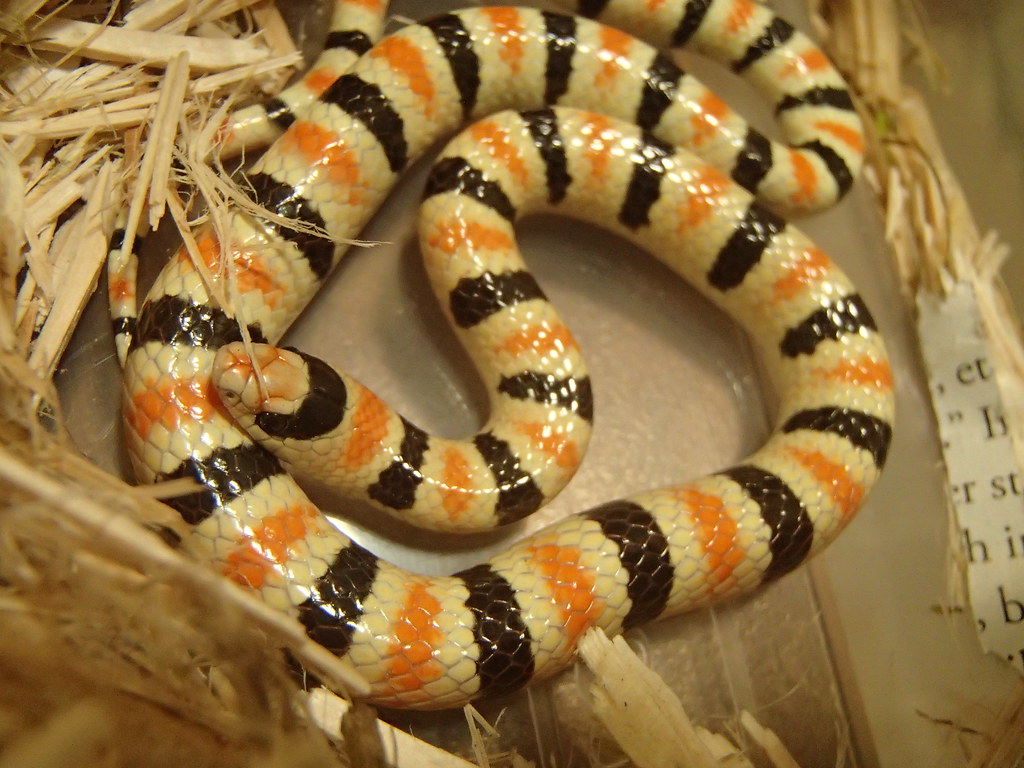 Chionactis annulata by Hawken Carlton, on Flickr
Chionactis annulata by Hawken Carlton, on Flickr
These guys are insect eaters (and the vendor said this one likes crickets, which means a new bug in the house too, for now), so they're more like feeding a mantid than the rest of the reptiles (including a far more often feeding schedule). I'm hoping I can coax him to eat the dubias I breed (one of their natural foods is roaches), or mealworms, but at least crickets aren't very expensive. He's not much of a handling animal though, very jumpy and sometimes likes to mock-strike, but once he settles he's cute.
This is Halailah; she's a newborn (still has her umbilical scar even) Baja king snake. Originally planned on getting a Mexican Black king, but she was cheaper and, besides the cool stripe down her back, she's just as dark as one. Good chance she'll stay that way too.
 Lampropeltis getula "nitida" by Hawken Carlton, on Flickr
Lampropeltis getula "nitida" by Hawken Carlton, on FlickrCommon consensus is that these guys are just a very southern, very dark morph of California king snake (Lampropeltis getula californiae, "nitida phase"), but with just how dark they are I think the Baja is just a touch cooler.
Other new arrival: Cinder, a Colorado Desert/Resplendent Shovelnose snake.
 Chionactis annulata by Hawken Carlton, on Flickr
Chionactis annulata by Hawken Carlton, on FlickrThese guys are insect eaters (and the vendor said this one likes crickets, which means a new bug in the house too, for now), so they're more like feeding a mantid than the rest of the reptiles (including a far more often feeding schedule). I'm hoping I can coax him to eat the dubias I breed (one of their natural foods is roaches), or mealworms, but at least crickets aren't very expensive. He's not much of a handling animal though, very jumpy and sometimes likes to mock-strike, but once he settles he's cute.
Viking
Well-known member
It is a beauty. Are they bred in captivity? They stay small?
Many years I had A Colombian red-tail boa. I gave her away when I moved from Chicago. She liked to go to sleep wrapped around my arm.
Many years I had A Colombian red-tail boa. I gave her away when I moved from Chicago. She liked to go to sleep wrapped around my arm.

$12.99 ($0.03 / Count)
Predator Foods Bulk Live Mealworms - 500 Count (Medium - 0.5")
Predator Foods

$49.99 ($0.25 / Ounce)
TC INSECTS . 1000+ XS Red Runner Live Roaches Food for Dart Frogs Praying Mantis Spiders Small Lizard Tropical Fish (1/16-1/4 in)
TC INSECTS

$15.99
$19.99
RESTCLOUD Insect and Butterfly Habitat Cage Terrarium Pop-up 23.6 Inches Tall
Restcloud

$79.95 ($1,279.20 / lb)
4Pack Fruit Fly Culture Live Flightless Gecko Spider Lizard Dart Frog Praying Mantis Food
Creation Cultivated

$14.99 ($0.47 / Ounce)
Fresh Fruit Fly Culture (Drosophila Hydei) - Praying Mantis Mantid Frog Lizard Food - 32oz Cup
Surmen Legacy

$29.99 ($0.15 / Ounce)
TC INSECTS . 200+ XS Red Runner Live Roaches Food for Dart Frogs Praying Mantis Spiders Small Lizard Tropical Fish (1/16-1/4 in)
TC INSECTS

$39.95 ($1.25 / Ounce)
Creation Cultivated 32oz Fruit Fly Culture - Live Feeder Insects for Praying Mantis, Jumping Spiders, Geckos, Lizards, Dart Frogs (Drosophila Hydei Flightless)
Creation Cultivated
If referring to the Shovelnose, many are wild-collected but some are captive-bred; hoping mine is among the latter but he's already fairly large for the species (they only get to about 15" max).It is a beauty. Are they bred in captivity? They stay small?
Many years I had A Colombian red-tail boa. I gave her away when I moved from Chicago. She liked to go to sleep wrapped around my arm.
I actually caught the shovelnose munching on a roach a couple weeks ago...such a rare thing since they're very nocturnal and very skittish around people.
In other news: the zoo is still expanding
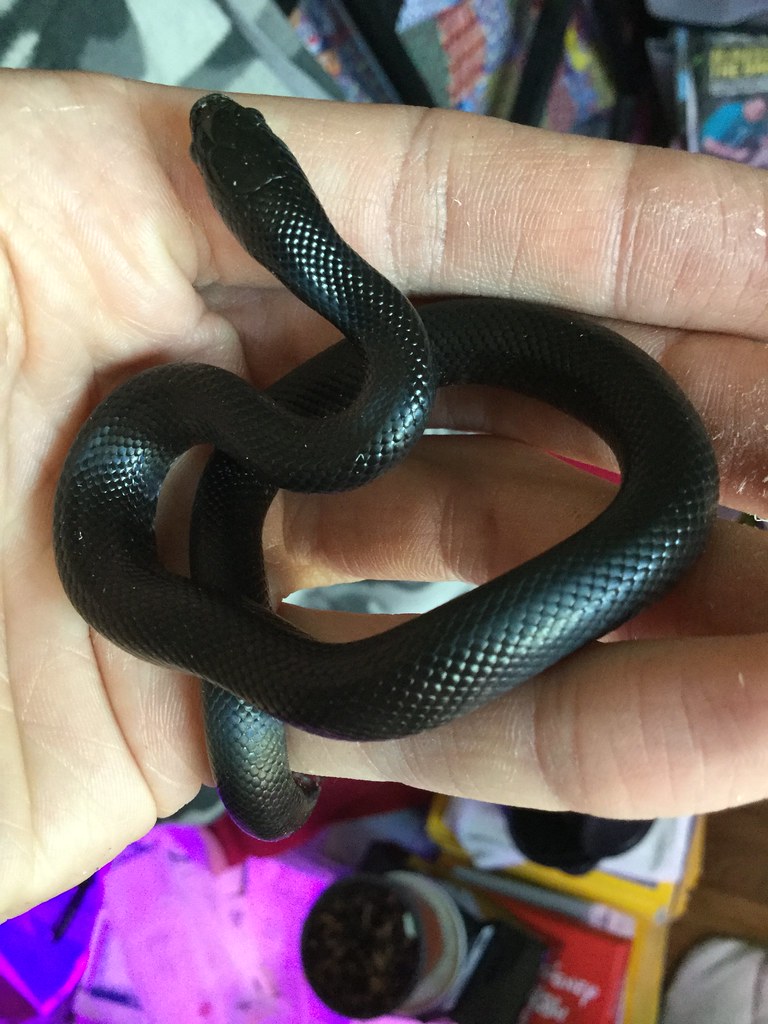 Tsefan by Hawken Carlton, on Flickr
Tsefan by Hawken Carlton, on Flickr
This is Tsefan; he's a Mexican Black Kingsnake (Lampropeltis getula nigrita), an animal I've been pining after for years. Only been in the house a couple days, and already he's trending toward being far better behaved (and already bigger, despite being younger) than my finger-nibbling Baja king.
 Tsefan by Hawken Carlton, on Flickr
Tsefan by Hawken Carlton, on Flickr
As can be seen a little bit in the above photo, he's still got some white patches on his chin and belly, which extend up and blend into the black on his sides, but as he grows up those will fade entirely or almost entirely, leaving an iridescent, solid chocolate-black snake. Since indigo snakes are so hard to come by, this is the next best thing.
In other news: the zoo is still expanding
 Tsefan by Hawken Carlton, on Flickr
Tsefan by Hawken Carlton, on FlickrThis is Tsefan; he's a Mexican Black Kingsnake (Lampropeltis getula nigrita), an animal I've been pining after for years. Only been in the house a couple days, and already he's trending toward being far better behaved (and already bigger, despite being younger) than my finger-nibbling Baja king.
 Tsefan by Hawken Carlton, on Flickr
Tsefan by Hawken Carlton, on FlickrAs can be seen a little bit in the above photo, he's still got some white patches on his chin and belly, which extend up and blend into the black on his sides, but as he grows up those will fade entirely or almost entirely, leaving an iridescent, solid chocolate-black snake. Since indigo snakes are so hard to come by, this is the next best thing.
MantisGirl13
Well-known member
Wow! He is stunning! I really want a snake now.
- MantisGirl13
- MantisGirl13
Allow me to fuel that fire a little more 
The collection (at least for the next few years as my limit for hiding new things is filled) is nearing completion, and the latest additions are these two het hypomelanistic Baird's Rat Snakes (Pantherophis bairdi).
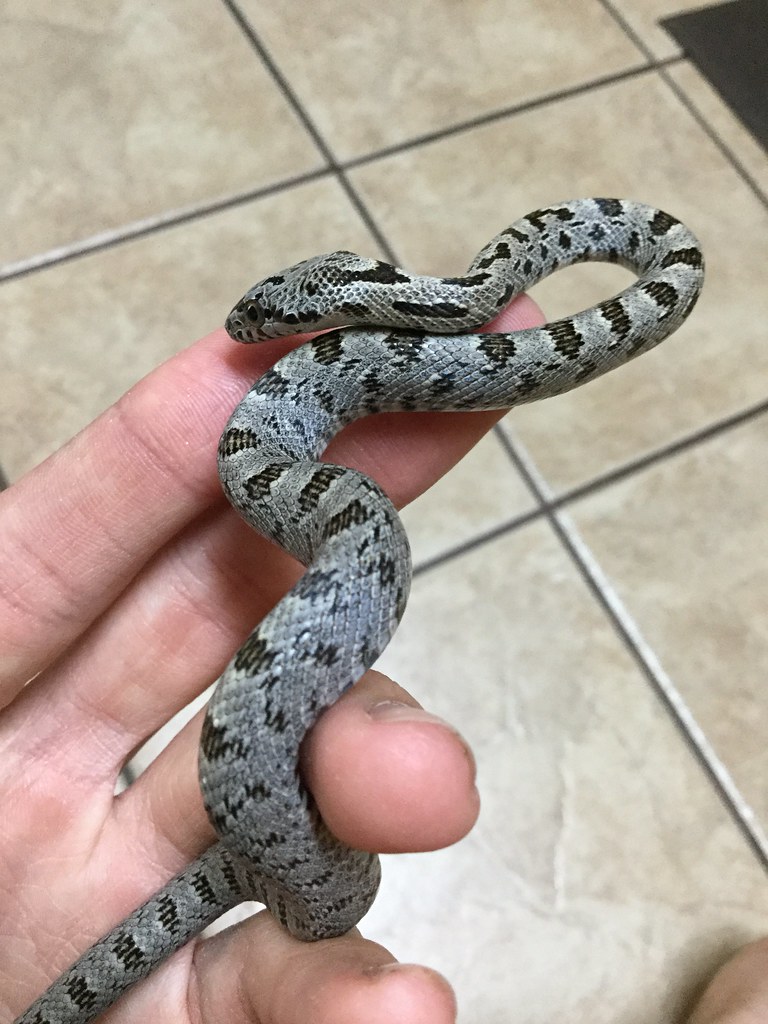 Leah by Hawken Carlton, on Flickr
Leah by Hawken Carlton, on Flickr
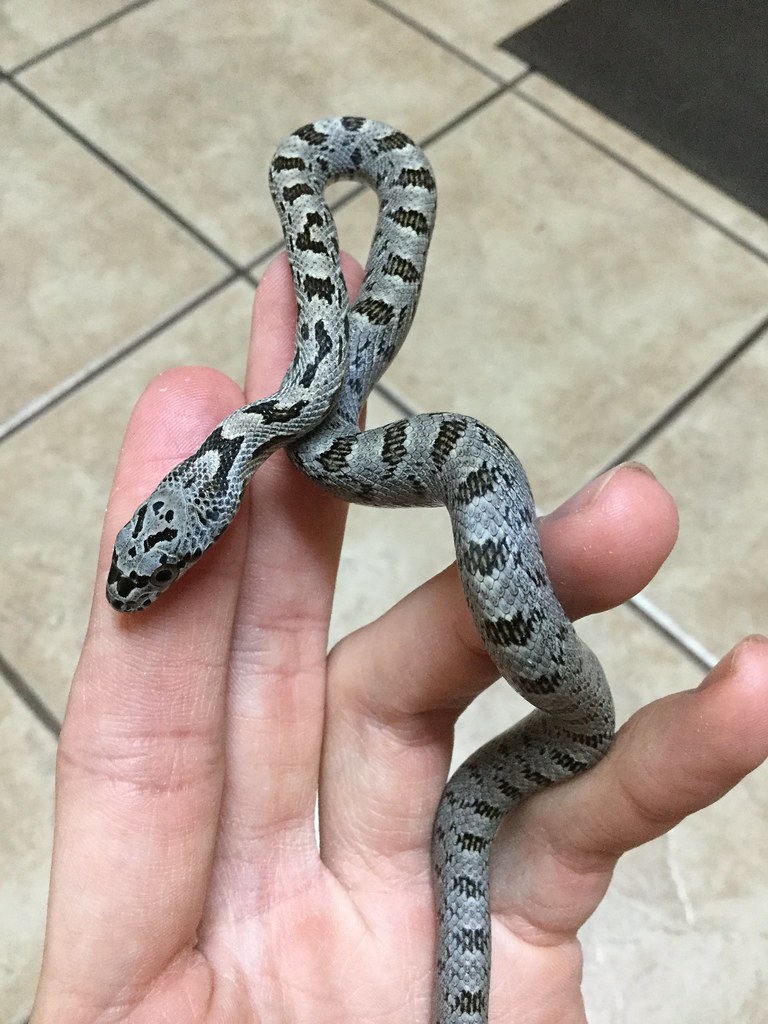 Leah by Hawken Carlton, on Flickr
Leah by Hawken Carlton, on Flickr
Female above, male below; this species is native to southwestern Texas and northern Mexico, a desert canyon specialist that gets about as long, sometimes longer than a corn snake, though a fair bit thinner, and adults look nothing like the hatchlings as they develop (depending on locality) colors ranging from striped or solid silver to yellow with silver heads, to brilliantly highlighted in oranges and pinks.
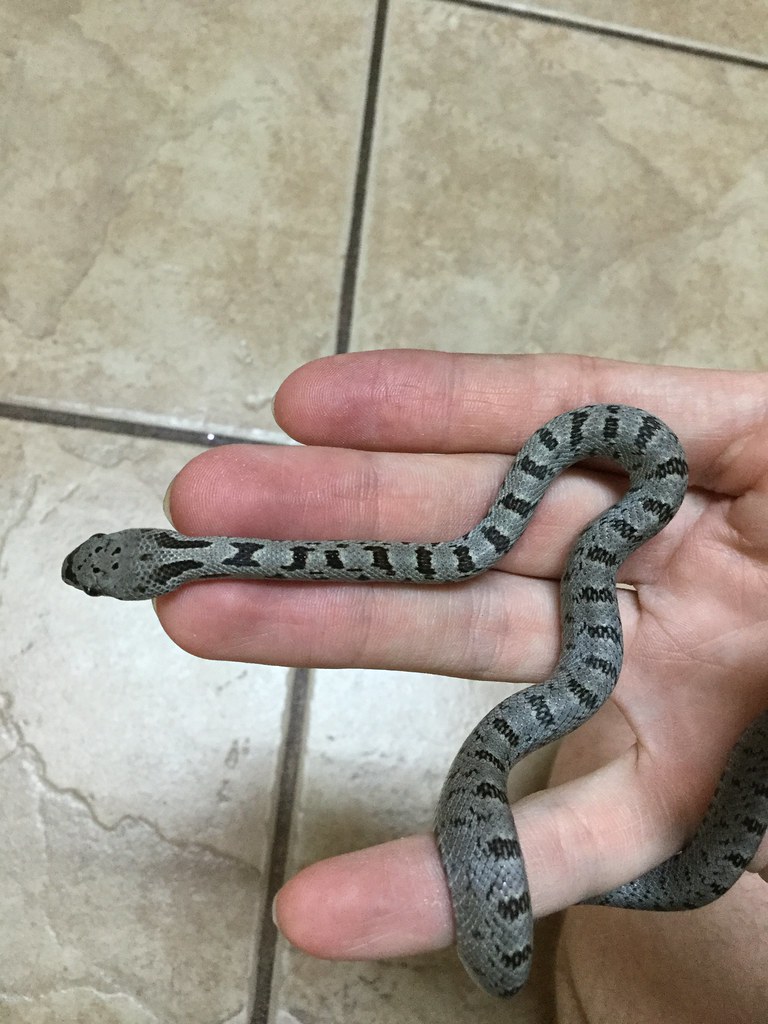 Jacob by Hawken Carlton, on Flickr
Jacob by Hawken Carlton, on Flickr
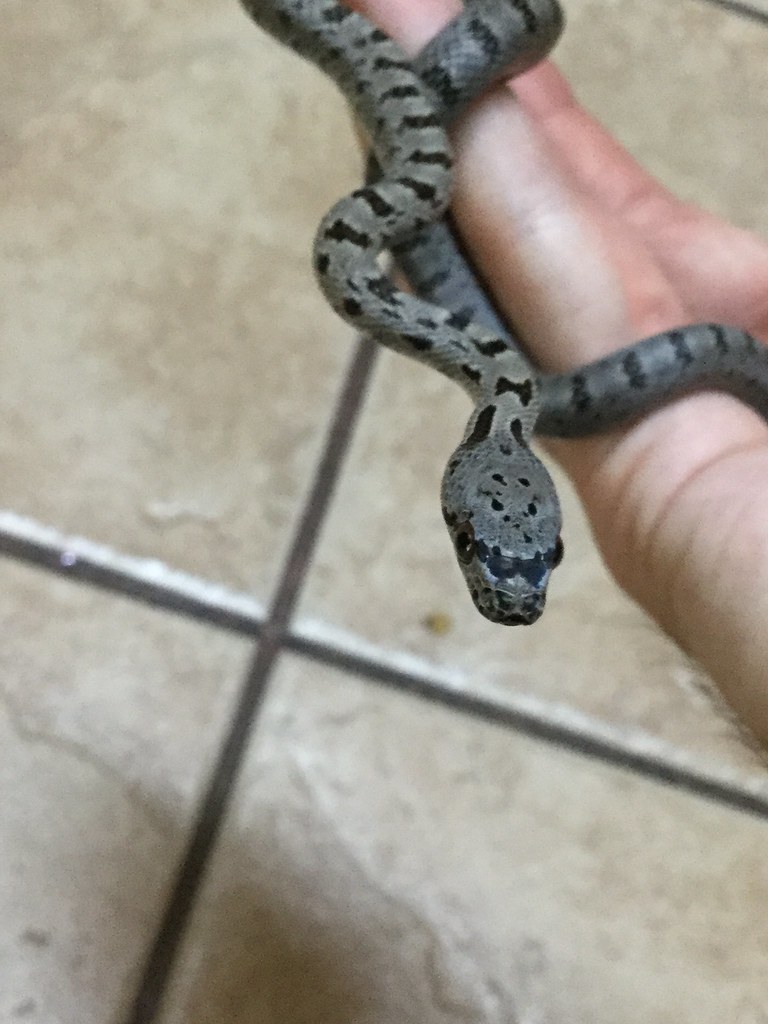 Jacob by Hawken Carlton, on Flickr
Jacob by Hawken Carlton, on Flickr
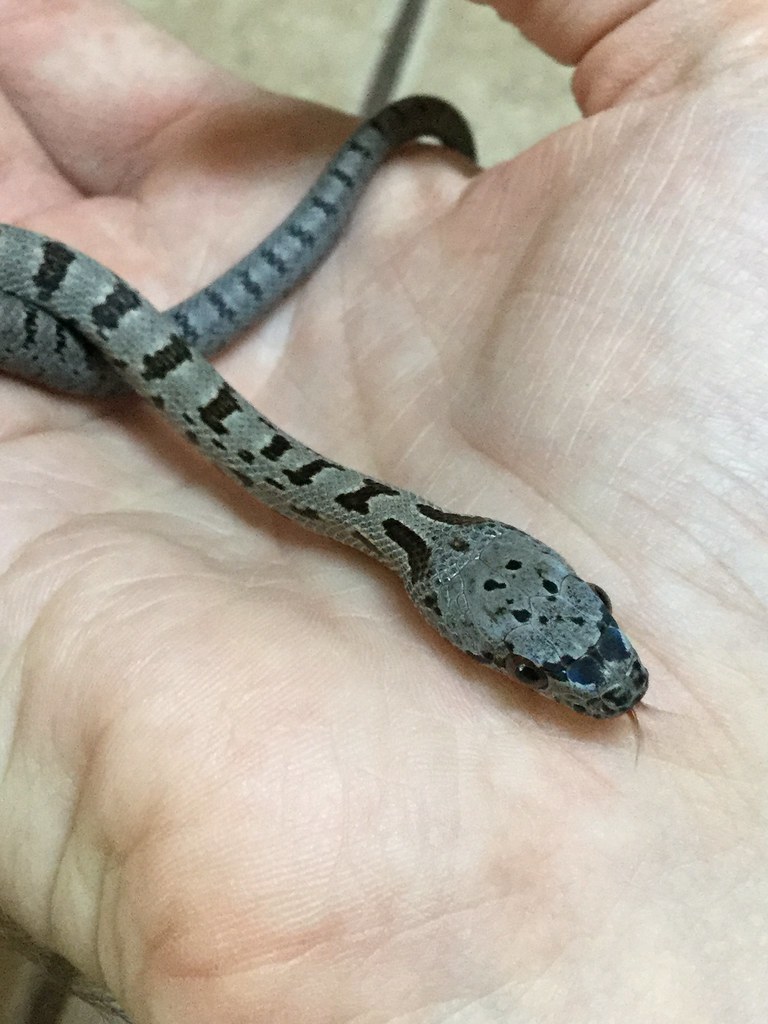 Jacob by Hawken Carlton, on Flickr
Jacob by Hawken Carlton, on Flickr
The collection (at least for the next few years as my limit for hiding new things is filled) is nearing completion, and the latest additions are these two het hypomelanistic Baird's Rat Snakes (Pantherophis bairdi).
 Leah by Hawken Carlton, on Flickr
Leah by Hawken Carlton, on Flickr Leah by Hawken Carlton, on Flickr
Leah by Hawken Carlton, on FlickrFemale above, male below; this species is native to southwestern Texas and northern Mexico, a desert canyon specialist that gets about as long, sometimes longer than a corn snake, though a fair bit thinner, and adults look nothing like the hatchlings as they develop (depending on locality) colors ranging from striped or solid silver to yellow with silver heads, to brilliantly highlighted in oranges and pinks.
 Jacob by Hawken Carlton, on Flickr
Jacob by Hawken Carlton, on Flickr Jacob by Hawken Carlton, on Flickr
Jacob by Hawken Carlton, on Flickr Jacob by Hawken Carlton, on Flickr
Jacob by Hawken Carlton, on FlickrMantisGirl13
Well-known member
Wow, those are beautiful!
- MantisGirl13
- MantisGirl13
Mantis Lady
Well-known member
beautiful snakes
The Mantis Menagerie
Well-known member
- Joined
- Sep 1, 2018
- Messages
- 98
- Reaction score
- 17
I have always loved snakes, but I hated the mouse part. Since you updated that these will indeed eat roaches, I may have to look into this species. How common are they at reptile shows?The family grew again...
This is Halailah; she's a newborn (still has her umbilical scar even) Baja king snake. Originally planned on getting a Mexican Black king, but she was cheaper and, besides the cool stripe down her back, she's just as dark as one. Good chance she'll stay that way too.
Lampropeltis getula "nitida" by Hawken Carlton, on Flickr
Common consensus is that these guys are just a very southern, very dark morph of California king snake (Lampropeltis getula californiae, "nitida phase"), but with just how dark they are I think the Baja is just a touch cooler.
Other new arrival: Cinder, a Colorado Desert/Resplendent Shovelnose snake.
Chionactis annulata by Hawken Carlton, on Flickr
These guys are insect eaters (and the vendor said this one likes crickets, which means a new bug in the house too, for now), so they're more like feeding a mantid than the rest of the reptiles (including a far more often feeding schedule). I'm hoping I can coax him to eat the dubias I breed (one of their natural foods is roaches), or mealworms, but at least crickets aren't very expensive. He's not much of a handling animal though, very jumpy and sometimes likes to mock-strike, but once he settles he's cute.
Not very. They are very rarely bred in captivity, a lot are wild-caught (which I don't recommend), and they're not handling animals. Plus as small as they are, they get out of cages that aren't wholly secure rather easily.I have always loved snakes, but I hated the mouse part. Since you updated that these will indeed eat roaches, I may have to look into this species. How common are they at reptile shows?
Most insect-eating snakes are similar, and many don't live long in captivity.
I don't have photos uploaded to a hosting site of my Australian ambassadors (a pair of snappy little spotted pythons -working on calming them down), but I do of a couple other recent arrivals. First, Gideon the gray-banded kingsnake. While I've already got several North American species, this one does hold a bit of a special title; incredibly unique in pattern and contrast and highly variable in the same note, they are rocky cliff specialists in the wild and present a special challenge for keepers when young (like this guy) in that many will only eat lizards, and will refuse mice until they get quite a bit larger. I was told this one's on scented pinkie mice now (ie. ones that smell like lizard), but we'll find out tomorrow...
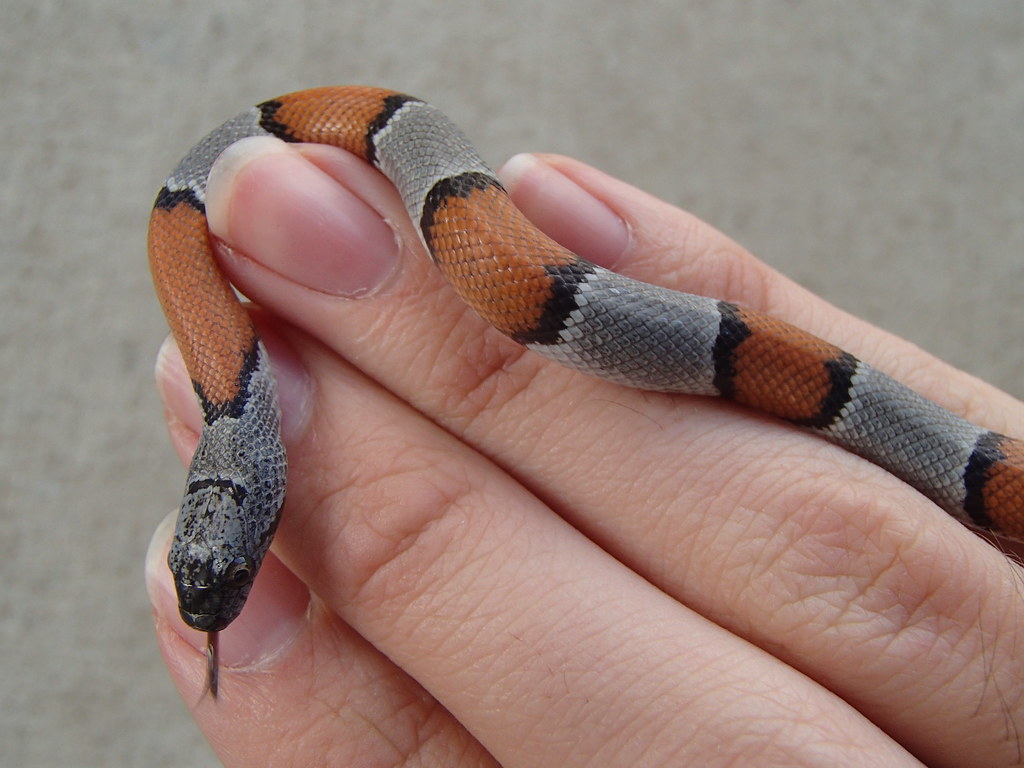 Gideon by Hawken Carlton, on Flickr
Gideon by Hawken Carlton, on Flickr
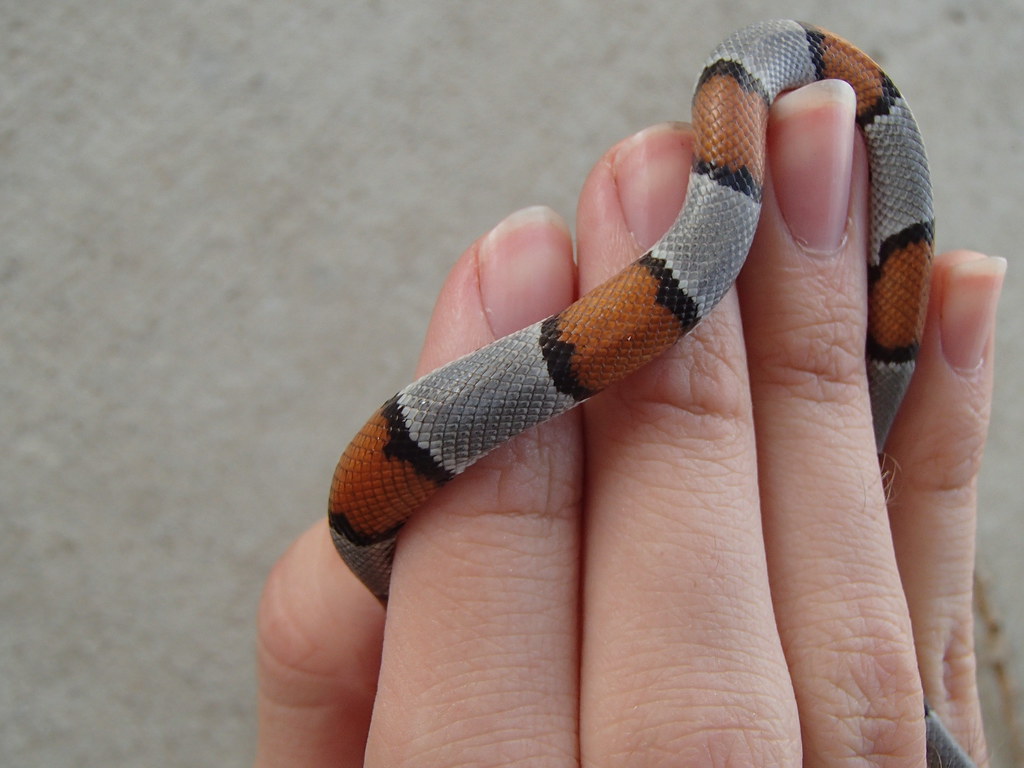 Gideon by Hawken Carlton, on Flickr
Gideon by Hawken Carlton, on Flickr
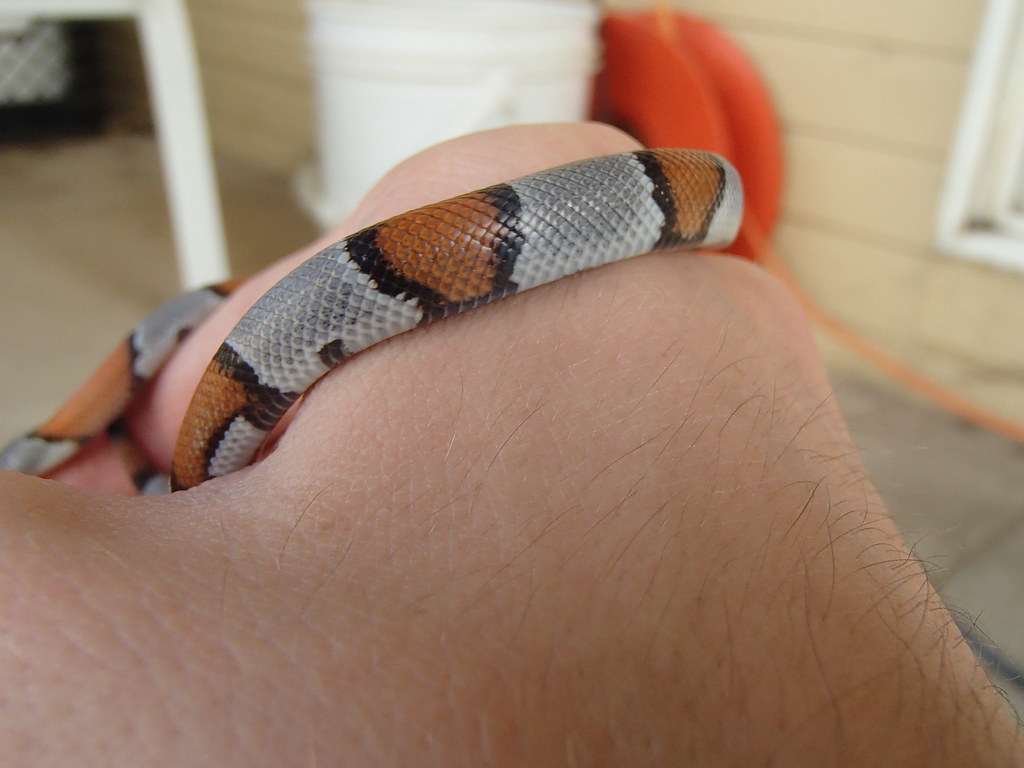 Gideon by Hawken Carlton, on Flickr
Gideon by Hawken Carlton, on Flickr
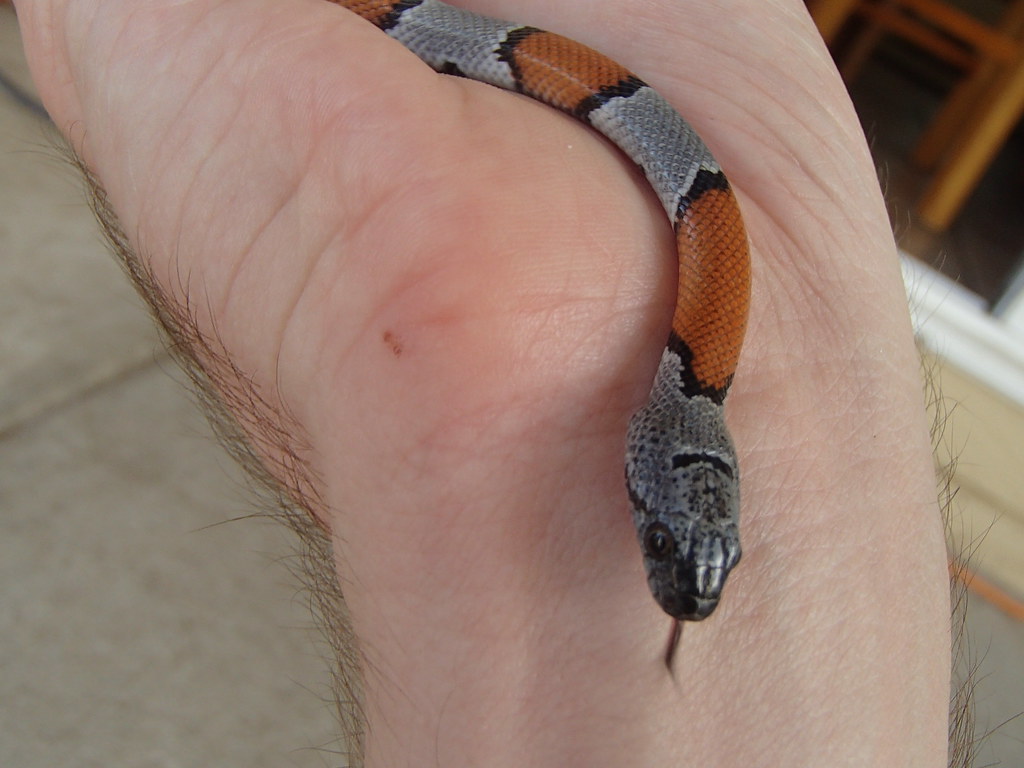 Gideon by Hawken Carlton, on Flickr
Gideon by Hawken Carlton, on Flickr
Secondly is my Latin American ambassador, Domhara. She's a Dominican mountain boa, a species once allied with the rainbow boas of South America (with good reason, as they have a very similar if more slender body structure and that same phenomenal iridescence) but now classed in its own genus with other Caribbean boa species. Also lizard eaters when young (this girl's well past that stage though), they are a a species typically highly inquisitive and very docile, though they do like to musk when disturbed.
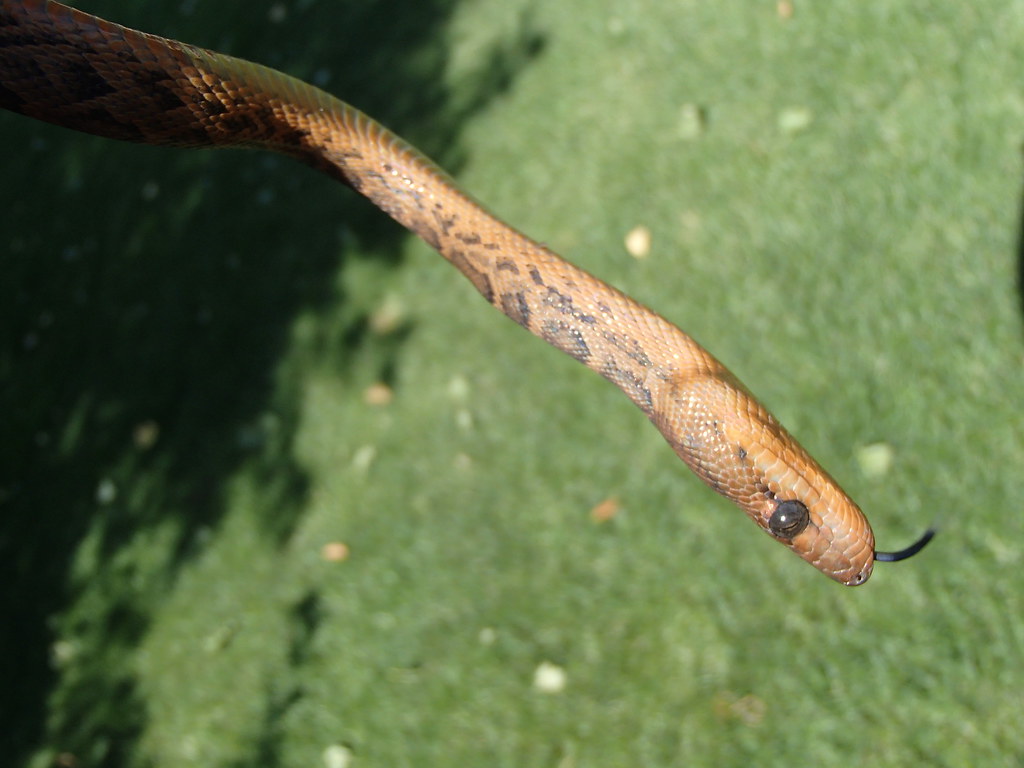 Domhara by Hawken Carlton, on Flickr
Domhara by Hawken Carlton, on Flickr
No, that photo is not upside down by the way
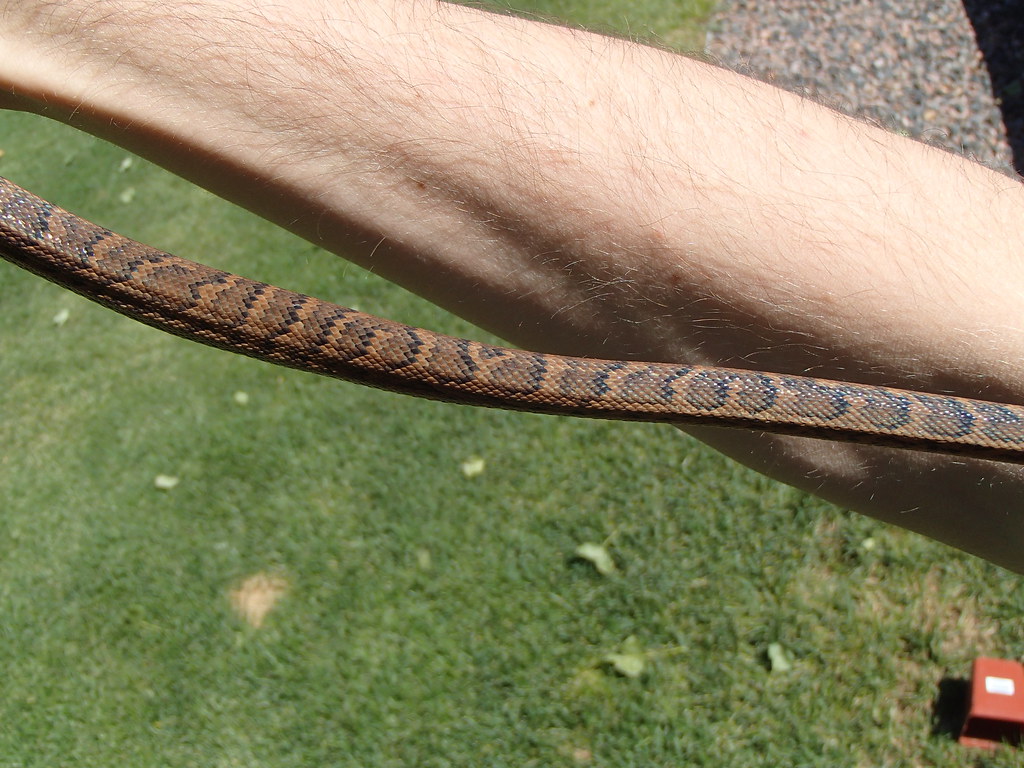 Domhara by Hawken Carlton, on Flickr
Domhara by Hawken Carlton, on Flickr
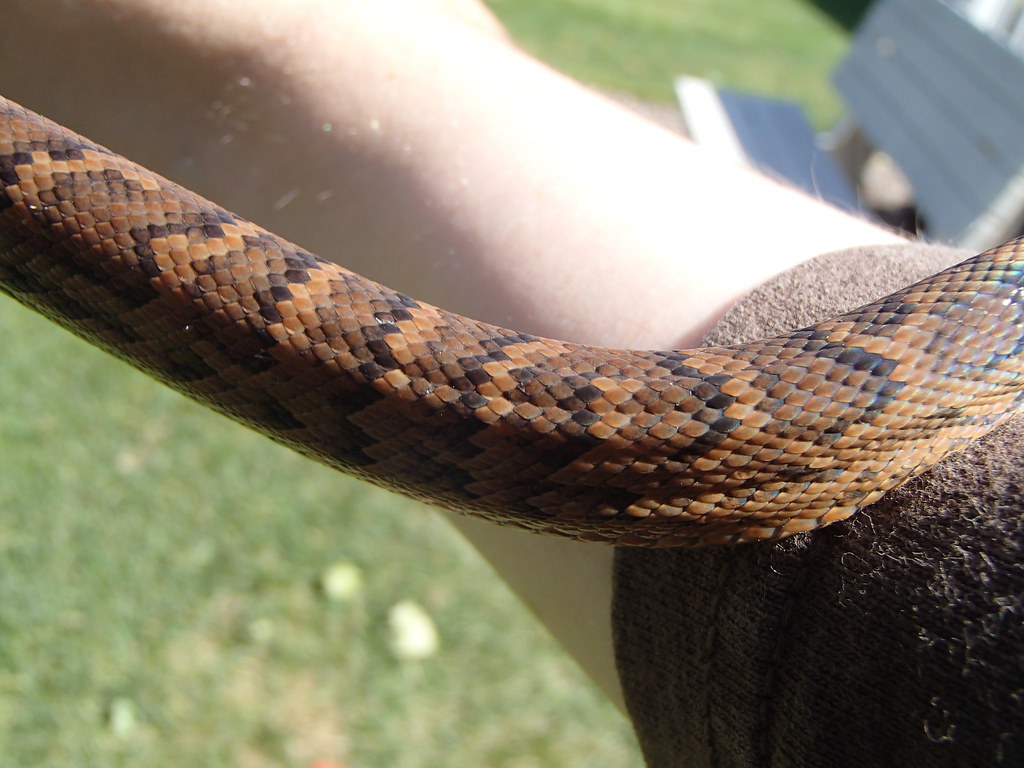 Domhara by Hawken Carlton, on Flickr
Domhara by Hawken Carlton, on Flickr
 Gideon by Hawken Carlton, on Flickr
Gideon by Hawken Carlton, on Flickr Gideon by Hawken Carlton, on Flickr
Gideon by Hawken Carlton, on Flickr Gideon by Hawken Carlton, on Flickr
Gideon by Hawken Carlton, on Flickr Gideon by Hawken Carlton, on Flickr
Gideon by Hawken Carlton, on FlickrSecondly is my Latin American ambassador, Domhara. She's a Dominican mountain boa, a species once allied with the rainbow boas of South America (with good reason, as they have a very similar if more slender body structure and that same phenomenal iridescence) but now classed in its own genus with other Caribbean boa species. Also lizard eaters when young (this girl's well past that stage though), they are a a species typically highly inquisitive and very docile, though they do like to musk when disturbed.
 Domhara by Hawken Carlton, on Flickr
Domhara by Hawken Carlton, on FlickrNo, that photo is not upside down by the way
 Domhara by Hawken Carlton, on Flickr
Domhara by Hawken Carlton, on Flickr Domhara by Hawken Carlton, on Flickr
Domhara by Hawken Carlton, on Flickr
Last edited by a moderator:
MantisGirl13
Well-known member
Wow! Domhara's pattern is so intricate! And I love the bright colors on Gideon.
- MantisGirl13
- MantisGirl13
Mantis Lady
Well-known member
Nice pics of your snakes. What do you feed them? roaches? mice?
Sorry, didn't see this.Nice pics of your snakes. What do you feed them? roaches? mice?
The vast majority of snakes do not recognize insects as food. Nearly all mine eat mice.
MantisGirl13
Well-known member
My mom would LOVE that! LolNearly all mine eat mice.
- MantisGirl13
Mantis Lady
Well-known member
Do you feed them live mice? or dead ones? I saw a snake feeding vid where some snakes accept dead mice, but others don't eat them.Sorry, didn't see this.
The vast majority of snakes do not recognize insects as food. Nearly all mine eat mice.



